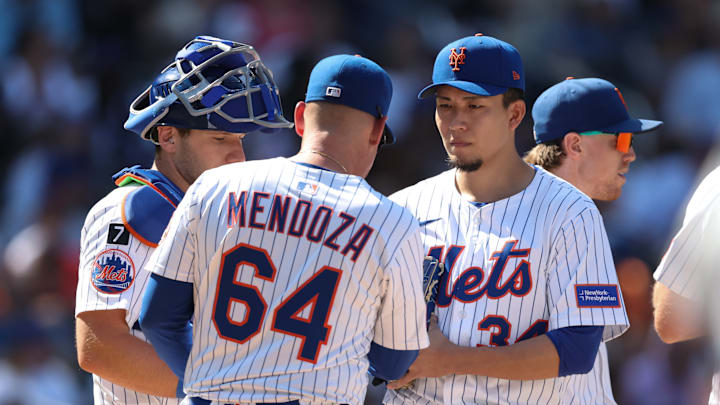Kodai Senga’s 2025 season with the New York Mets was a jarring tale of two halves. An All-Star caliber first 13 starts, where he posted a dominant 1.47 ERA, gave way to a catastrophic collapse after a mid-season hamstring injury. Upon his return, Senga was ineffective, finishing his final nine starts with a 6.18 ERA and 0-3 record. This wasn't a temporary slump; it was a systemic breakdown rooted in around 2 MPH velocity loss on his fastball, mechanical compensations from the injury, and a resulting decline in the effectiveness of his entire arsenal.
The precipitous decline has left the Mets in a bind. With his market value at a low point, a trade is not a feasible option. The organization's focus must now shift from banking on an ace to rebuilding Senga into a reliable, mid-rotation starter for the remainder of his contract. The key to this transformation may not lie in rediscovering his old self, but in following the blueprint of a pitcher who successfully reinvented himself after a similar decline, two-time Cy Young Award winner Corey Kluber.
The Corey Kluber blueprint in embracing a new reality
After a series of career-threatening injuries, Corey Kluber faced a crossroads. The elite velocity that defined his peak was gone. His 2021 comeback with the New York Yankees was a masterclass in adaptation. He didn't regain his 95+ MPH fastball; instead, he accepted his new reality and evolved into a craftsman. He focused on what he could control: impeccable command, meticulous preparation, and strategic pitch sequencing. Kluber's success, highlighted by a no-hitter where his fastball never topped 92.5 MPH, proved that elite pitching is about more than just speed.
This is the exact lesson Senga must embrace. His post-injury fastball sat in the 93-94 MPH range, a stark drop from his 95.9 MPH average in 2023. That velocity dip was catastrophic for his arsenal, as it reduced the deception of his signature "ghost fork," causing its whiff rate to plummet by nearly 18 percentage points. Instead of chasing lost velocity—a battle pitchers over 30 rarely win—Senga can follow the Kluber model by optimizing his performance at his new, lower velocity.
Senga's path forward is not to shy away from his best weapon but to build his entire identity around it. The ghost fork, even in a down year, remained an above-average pitch and must be his primary offering. To maximize its effectiveness, he needs to fundamentally change his approach with his fastball. Rather than relying on a diminished four-seamer that got hit hard (.543 SLG against in 2025), he could transition to a sinker. A sinker is designed to be effective at lower velocities, inducing weak, ground-ball contact that would perfectly complement the swing-and-miss nature of the fork. This shift, combined with completely abandoning the disastrous sweeper (.889 SLG against), would create a smarter, more sustainable pitch mix.
Ultimately, the Mets must view Senga as a solid mid-rotation arm, not the ace of 2023. The franchise should project him as a #3 or #4 starter, with realistic expectations of around 4.00 ERA. By managing his workload and setting clear performance benchmarks, the Mets can support his new identity. Senga's future hinges on this critical adaptation. Trying to pitch like his old self with diminished stuff is a path to failure. By following the Kluber blueprint, Senga can evolve and once again become a valuable and reliable pitcher.
